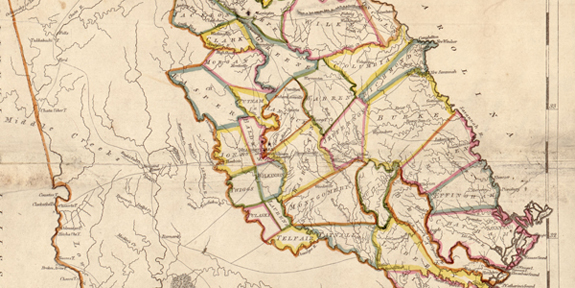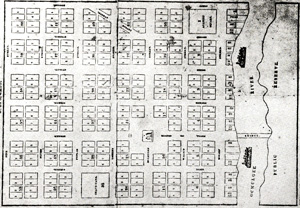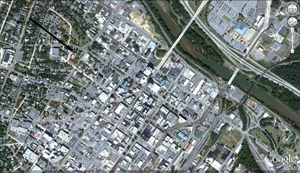The preplanning of new towns upon the frontier [was] an old southern tradition which has been responsible for such famous cities as Annapolis, Williamsburg, and Savannah. Most southern county seats were planned prior to settlement as well. It is rare, however, for nineteenth century state governments to be sufficiently farsighted to perceive the need to underwrite the development of large regional centers. Thus, the planning and development of Milledgeville, Macon, and Columbus, Georgia, between 1803 and 1827 stand as a monument to early pioneering unparalleled elsewhere in the region.... Macon in many ways best exemplifies the commercial success of [these] river towns which had been founded by the State to facilitate the expansion of the cotton belt frontier. The city grew rapidly and its economic importance [was] reflected in the continual increases in the number of bags of cotton shipped. While only 4,000 bags were shipped in 1824, by 1828 the number had increased to 39,000. By 1840, the town had become the greatest inland cotton port in the state. Gerald L. Holder, “State Planned Trading Centers in Pioneer Georgia,” Pioneer America, XIV, no. 3 (1982), pp. 115-122.
Macon's population in 1840 was nearly 4,000, twice that of Milledgeville, the state capital, but only a third that of the old colonial cities of Augusta and Savannah. Atlanta was nothing but a country crossroads known as Terminus. The city's early growth was due to its location at the head of navigation on the Ocmulgee River. After completion of the Central Railroad to Savannah in 1843, Macon became even more important as a railroad junction and regional center for trade and commerce. The pioneers that flocked to Macon in the decade after its founding were diverse but most were following the generally southwesterly migration across the South during the early nineteenth century as the Native American tribes were slowly driven out and new lands were exploited for the expanding cotton economy. Among these early settlers were Edward Dorr Tracy, whose daughter Anne Clarke married William Butler Johnston in 1851 and on whose land the Johnston-Felton-Hay House was later constructed, and William Butler Johnston, whose great wealth made possible the construction of the house in the late 1850s. Early settlers typically did not migrate alone but rather with other relatives in addition to their immediate families. Both Tracy and Johnston had relatives not only in Macon but also in the established counties of the eastern Piedmont. Campbells, Gilberts, Collins, Butlers, and Trotts were among those who comprised the extended family of Anne Tracy and William Butler Johnston.
*Gerald L. Holder, “State Planned Trading Centers in Pioneer Georgia,” Pioneer America, XIV, no. 3 (1982), pp. 115-122.
|


